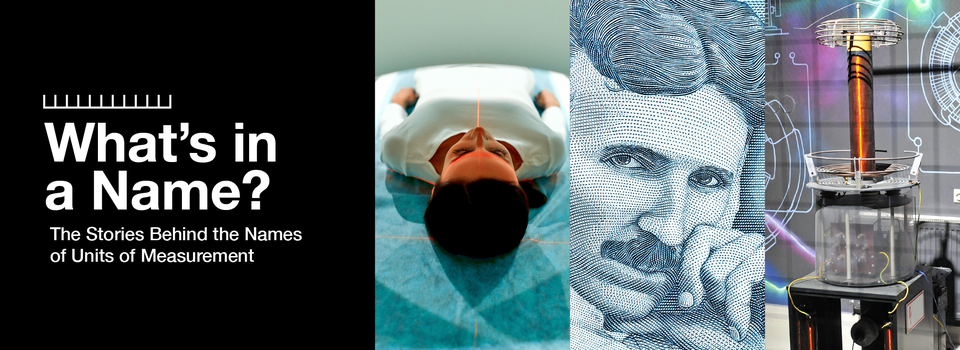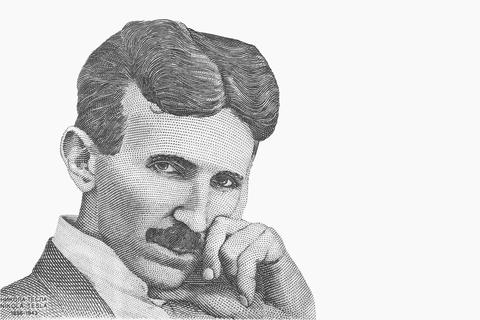Taking Measure
Just a Standard Blog

Do you enjoy flipping on the light switch or plugging in that favorite electrical device? Well, you can thank Nikola Tesla — born 167 years ago today — for that amazing invention.
You may think of Thomas Edison as the main pioneer in electricity. But Nikola Tesla brought us alternating current (AC) electricity, which is the type of electricity that is widely used in our homes and buildings today. As the name implies, alternating current reverses direction at regular intervals, and it turns out that it’s much better for moving electric power over long distances.

This is different from direct current (DC) electricity, which is commonly used in batteries. While Edison did not invent DC, he did have patents on this type of electricity. Edison was a big proponent of DC power before Tesla demonstrated AC power’s advantages in 1893. This led to a feud between the two pioneers, known as the “War of the Currents.”
Like many early inventors and scientists, Tesla has a unit of measure named after him.
The “tesla” is the unit for magnetic flux density. Think of magnetic flux density as a measure of magnetic strength. Imagine you are holding a sugar cube in your hand; it’s fairly light and not very dense. Now, imagine the cube turns into lead. It’s now heavy and quite dense. The tesla is a measure of that density, but for the strength of a magnetic field instead of the mass of an object.
That tesla is not just an abstract physics term; it’s actually used every day.
One particularly important area is when it comes to MRI machines that are widely used in medicine. When you get an MRI, you’re placed in a large magnet. The tesla is a measure of the strength of that magnetic field that surrounds you in the machine.

A typical MRI machine has 1.5 to 3.0 teslas in strength. Experimental MRIs even go up to 10.5 teslas. The different types of MRI machines use varying amounts of teslas depending on the quality of images you need.
Besides the tesla, there’s a similar measurement for a related quantity known as magnetic flux, which measures the total magnetic field going through an object, as opposed to just its density. That’s called a “weber.” No, you can’t make these names up! The weber is named after Wilhelm Eduard Weber. Here’s how you say his name in case you were wondering.
But today we’re here to remember Tesla’s contributions on his birthday, so we will save Mr. Weber for another day.
More Taking Measure Posts About Historical Figures in Science
- What’s in a Name? The Magnetic Weber
- Under Pressure: Blaise Pascal, the Barometer and Bike Tires
- Henry Moseley: A Patriotic Scientist Who Changed the Periodic Table — and Then Went Off to War
- Ada Lovelace: The World’s First Computer Programmer Who Predicted Artificial Intelligence
- Alan Turing’s Everlasting Contributions to Computing, AI and Cryptography
About the author
Related Posts
Comments
The tesla was adopted in 1960 by the General Conference on Weights and Measures as the standard unit of magnetic flux density. One tesla equals 10,000 gauss. The military-surplus magnetron magnet I used in a 7th-grade science-fair experiment in 1967 had a field strength of 0.09 tesla, or 900 gauss.
Magnetic field strength in power transformers, magnetic-field sensors, loudspeakers, microwave-oven magnetrons, etc. is specified in teslas. Earth's magnetic-field strength is in units of microteslas (µT).
Tesla, Inc. bought the Tesla *trademark,* not the name which is in the public domain, and may use the Tesla *trademark* only in the automotive, energy storage, and solar-energy industries.
he is the coolest and boring man.






I’ve been in electronics for over 40 years and the term tesla didn’t appear until after elon musk bought the rights to the name. Why is that. Tesla discovered a c power after edison energised the light bulb using dc electric. Most foreign countries use a form of dc power to light there cities.